The desire to see other ACEs initiatives grow and flourish was evident at a recent meeting of the Resilient Columbus County (North Carolina) ACEs initiative when Mebane Boyd, executive director of the New Hanover Resiliency Task Force (also in North Carolina), shared with the Columbus County and neighboring Pender County groups how New Hanover created and works on its strategic plan.
In the spirit of sharing, Boyd agreed to let ACEs Connection post the strategic plan and the video of the meeting, so other new ACEs initiatives can learn from the New Hanover Resiliency Task Force’s work and experience.
“We are learning as we go,” Boyd said. “We just happen to have a couple of years’ head start on today’s beginning communities. We want to share what we’ve learned and are learning.”
In the spring of 2018, New Hanover County got a six-month planning grant from the Duke Endowment. Boyd was hired to be the six-month coordinator.
She joined a group of 10 or 15 people who were inspired by the screening of the documentary “Resilience” earlier that spring, and who wanted to get going on an initiative.
“The (New Hanover Regional) hospital, Community Care, Smart Start, Communities in Schools, the Department of Social Services, people in the court system and others saw the documentary and said, 'Let’s stop talking and do something,'” Boyd said.
Their planning period paid off. The group started meeting regularly and opened the meetings up to anybody who wanted to come. “It was one of the best things we did,” Boyd said.
In the first phase of the plan, the group decided to engage and involve the community, agree on a timeline, and decide on which models to consider and invest in. They also looked at what data to collect on individual, organizational and systems levels. This remains an area of growth and learning.
Phase Two involves educating the community on the Pair of ACEs, the fact that there are adverse childhood experiences and adverse community experiences. ”We knew we needed to educate and be educated, to learn about what our community’s experiences were and are. We need to understand our unique adverse community environment,” Boyd said.
Phase Two also involves education about the impact of toxic stress and the Community Resiliency Model (CRM), a hands-on neurobiological training involving ACEs and brain science, to help people learn how to regulate their central nervous system and stay grounded during stressful situations.
Implementing Phase Three means helping organizations and providers become more trauma-informed and better able to deal with their own traumas and triggers.
“Most of the early (CRM) trainings centered on teachers, first responders, and health care workers. Until we are well, it is hard for us to take care of (other) people,” Boyd said.
Phase Four is training in trauma-informed and resilience-focused models for students, clients, parents, and the community.
Phase Five is implementing the trainings across all sectors of the community; this work will be ongoing.
Phase Six is community-level coaching and accountability, and work on funding strategies to continue to train and coach.
The phases look organized paper, but, Boyd said, “Nothing we do in human services is linear. If somebody new comes into the work, you have to educate them,” said Boyd, explaining that the group may have several phases of the work going on at the same time.
Quick to give credit to groups that helped develop the plan, Boyd was particularly complimentary of the New Hanover County Strategic Planning Department.
“We were able to use their expertise, and met many, many times, before coming up with the second page of the document. Some of us got frustrated. This took months. We would wonder, ‘Why are we talking about this again?’”
”Creating the plan was the work. Coming up with our common language was key to our progress. We needed to establish the community level goals, and to look at where we could make a difference.
“Racial equity runs through everything that we do,” she added. “In the last few months, we’ve realized what a challenge racial equity is, and we’ve realized that everything we do should be done through the filter of racial equity.”
Measuring success is also part of the work. Boyd said the group worked to develop Critical Success Factors, to “establish data points that can help tell us if what we are doing matters, if it is moving the needle.”
The group recently completed a steering committee retreat.
“Planning is never done and creating a strategic plan is something you are always working on,” she said. “Some of the work is immediate and some of it is long-term work that could be going on for 10 years or more.
“We are changing generational trauma. This is not work done in a short period of time. We knew we would be in it for the long haul. So we are now educating about trauma and racial disparity.”
She says a main factor in the success of this work is to keep it “trauma-informed and resiliency-focused.”
The group will know their hard work is paying off as they see more agencies looking through the trauma lens. An example? When more pediatrics practices are using ACEs screening, and more community members, having been through the trainings or hearing about them, are understanding their own biological responses to stress. Among other criteria for success are greater community understanding of ACEs science, more parents and providers being able to support children’s needs for social/emotional development and stress management, and delivery of equity training.
Boyd had these additional comments during the Q&A session:
On relationships: They are so important. If you were together and respectful and built your community, you are developing your relationships for further work. I spend a lot of my time inviting people to meetings, thanking them for coming. A lot of my time is spent on building relationships.
On the pace of the work: When you get together and convene, that is the work. Don’t be in a rush.
On who is needed to do the work: Work with the people who are there and committed. If you wait until everybody is at the table, you will never get it done.
On funding: You need money to pay a coordinator. We have received grants. The Department of Public Instruction provided money in 2018 that was used to train the trainers for the Community Resiliency Model, so about 30 people could attend the five-day training. We also have a part-time person doing all the movie screening and coordination of training. Task Force members are helping to get out the vote, and have been asked to contact legislators to ask for Medicaid expansion. We could use that (Medicaid expansion) money to help prevent ACEs, make lives better.
On the difference the work has made in the community: All 1,800 county employees have received at least a 90-minute CRM resilience training. They are not fully trained on CRM but have learned some CRM skills. County employees say staff members are now much more aware of their co-workers’ stress. They look in on each other, they know to ask, “How are you doing?” It helps to create a common language. It helps to normalize stress responses and push that message of having compassion and empathy for ourselves and our colleagues.
On subcommittees: Each subcommittee meets monthly. There are eight subcommittees for the New Hanover Resiliency Task Force:
- First Responders and Justice
- Early Childhood (ages 0-8)
- 4th to12th Grade
- Family, Faith and Community
- Health Care
- Data
- Arts
- Marketing
For more information, visit the New Hanover Resiliency Task Force on acesconnection.com or visit the website the group was already working on when they joined ACEs Connection, nhcbouncesback.org.
To access the video on YouTube, please
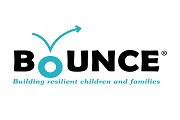




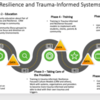
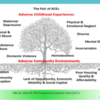
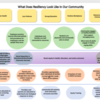
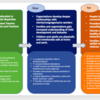
Comments (0)